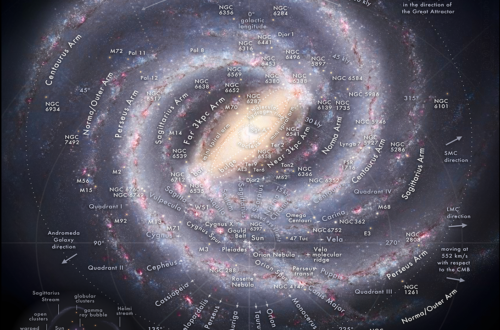
Ho’oponopono and the Shamanic Journey to Wholeness
An Introduction to the Spirit of Shamanism
Long before our bustling cities and the birth of recorded history, there existed the mystical practice of shamanism. Rooted deeply in various cultures, the shaman holds a unique, almost enigmatic position, sometimes at the heart of the society, other times on its fringes. Across diverse landscapes and cultures, shamans share experiences of alternate realities, ecstatic visions, and journeys into realms beyond the ordinary.
Shamanism: An Ancient Healing System
Heralded as one of the world’s most ancient healing traditions, shamanism has birthed practices we’re familiar with today, such as psychotherapy. Its healing journey, universal in its reflection of the human condition, finds echoes across civilizations and epochs. Shamanism’s heartbeats in the rhythm of life itself, pulsating through everything we see and feel.
Ho’oponopono: Where Archetypes Meet Shamanic Origins
Every human carries within them age-old patterns and primordial images – the archetypes. In ho’oponopono, these elements of the super-conscious sometimes stir our subconscious, influencing our behaviors and emotions. This connection to our deeper selves and the world around us harks back to the Palaeolithic era, where shamans harmonized with the rhythms of nature, learning from the wild creatures and aiming for mastery over the elements that sustained life.
Embracing Animism and Nature’s Essence
In the world of shamanism, animism reigns supreme – a belief that everything possesses a soul, an energy. This energy, referred to as “Mana,” ties all living entities, binding them with the Anima Mundi, or the World Soul. In the world of ho’oponopono, emotional afflictions like anxiety and depression often arise from a “loss of soul”. Traditional Hawaiian kahunas, akin to witch doctors, harness ho’oponopono to mend this loss, seeking balance and harmony.
Primitive Essence in Today’s Context
Labeling shamanistic practices as “primitive” isn’t derogatory. Rather, it underscores a profound connection to nature, to the untapped realms of our subconscious and super-conscious minds. The chasm between modern life and our innate, primal nature can lead to neuroses and feelings of disconnection. Ho’oponopono and shamanistic practices bridge this gap, guiding us back to our true selves.
Hearing the Shamanic Call
Amidst life’s storms, the shamanic call beckons. This call, often arising during existential crises, propels an inward journey towards healing. While shamans, in their healing rituals, might appear as external agents of change, their true intent is often self-healing. This mirrors the essence of ho’oponopono, where personal responsibility and inner transformation are paramount.
Shadow Confrontation: The Heart of the Shamanic Journey
Every shaman must face their shadow – the unlit alleyways of our psyche that hoard suppressed memories, fears, and desires. In ho’oponopono, this dark side, comprised of our karmic-data, crafts our experiences, occasionally leaving us feeling victimized by external circumstances. Embracing and integrating these shadows liberates us, unveiling a world of insights, leading to personal transformation and inner harmony.
Becoming the Shaman: A Path of Rebirth
To be a shaman is to embrace trials, to undergo a metamorphosis – dying to the ego and being reborn in the vast ocean of divinity. Distinct from neurotics, shamans harness divine energies, serving as bridges between earthly and heavenly realms.
The Shamanic Cosmos: A Triad of Realms
The shaman’s world divides into three – the Middle World of daily experiences, the shadowy depths of the Underworld, and the ethereal expanse of the Sky Realm. Anchored amidst these is the World Tree, representing creation and regeneration, connecting these realms and mirroring the Kabbalistic tree of life.
Journeys, Symbolism, and Transformation
As shamans descend to the Underworld, they confront their shadows, experiencing symbolic deaths and rebirths. This mirrors the cleaning practices of ho’oponopono – delving deep within to cleanse and rejuvenate. The subsequent ascension to the Sky Realm is an awakening, a realization of the boundless consciousness and the divine dance of existence.
Returning with Elixirs: The Shaman’s Role
The zenith of the shamanic path is the return, armed with celestial wisdom, to serve the community. While individual experiences fuel their wisdom, the essence of their journey is self-healing. This aligns beautifully with the Hero’s Journey, wherein knowledge acquired in ethereal realms becomes a balm, a salve for the society’s soul.
The Dual-Edged Sword: The Shaman’s Shadow
Like any position of power, shamans too can stray, succumbing to hubris, forgetting that true healing is an inside job. Their shadow serves as a reminder of humility and of the impermanence of power.
Jung, Shamanism, and the Soul’s Healing
Carl Jung’s insights into human psychology resonate with shamanic principles. His journey through the unconscious and the emphasis on integrating one’s dualities align with the shamanic quest. In essence, both Jung and the shaman act as soul’s healers, guiding us towards wholeness.
Ho’oponopono, like so many healing modalities originates in shamanism, so is more than simple rituals or mantras. It’s a profound journey inward, a quest for self-awareness, and an embrace of our interconnectedness. While different in their practices, both lead us to the same destination – a state of harmony, understanding, and universal love. Whether you’re a novice or seasoned practitioner, embracing these teachings can illuminate paths to inner peace and profound spiritual growth.


You May Also Like

Is Ho’oponopono Fake?

Ho’oponopono and the Universe: Bridging the Infinite with the Intimate
